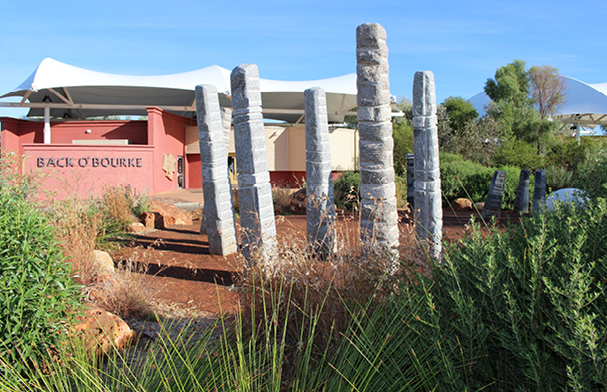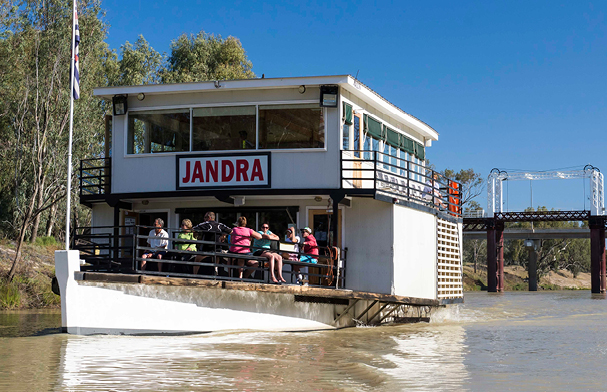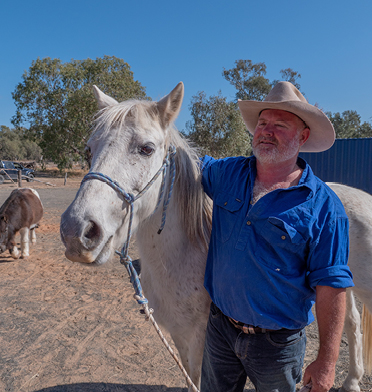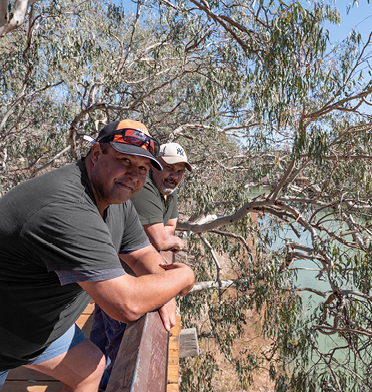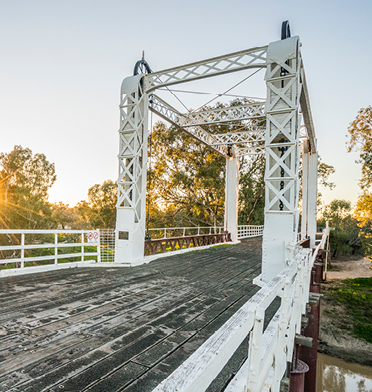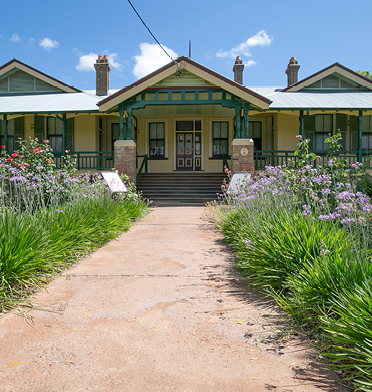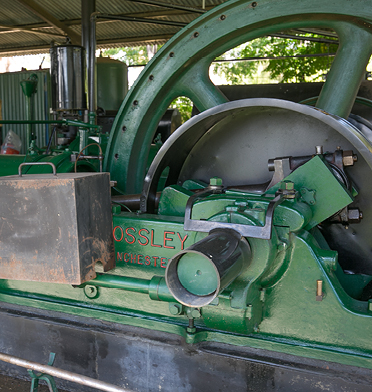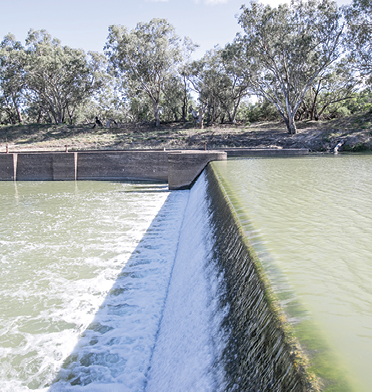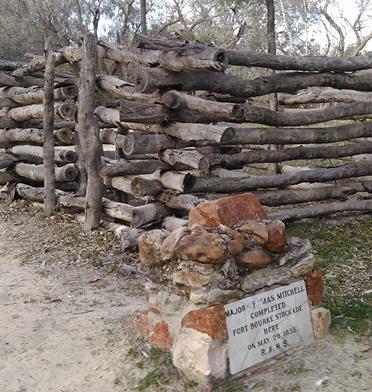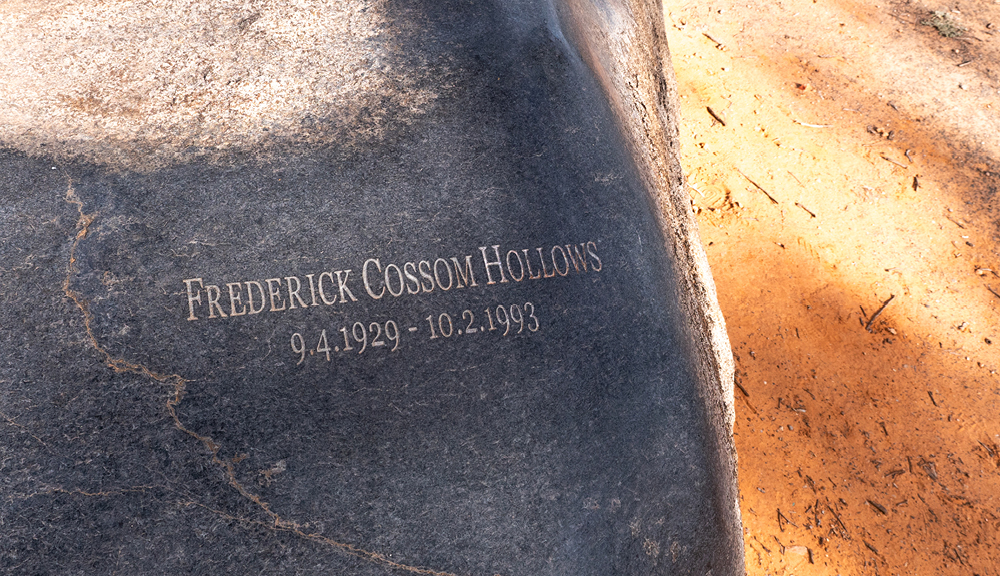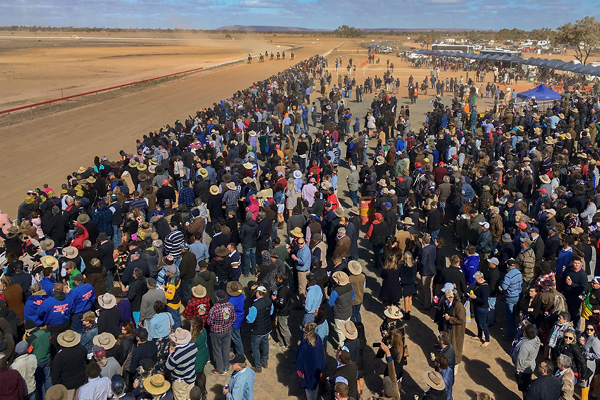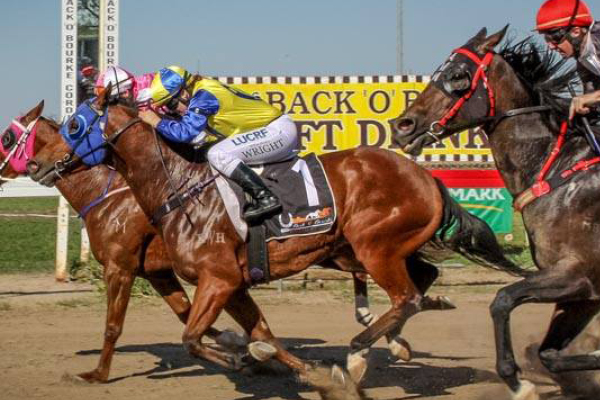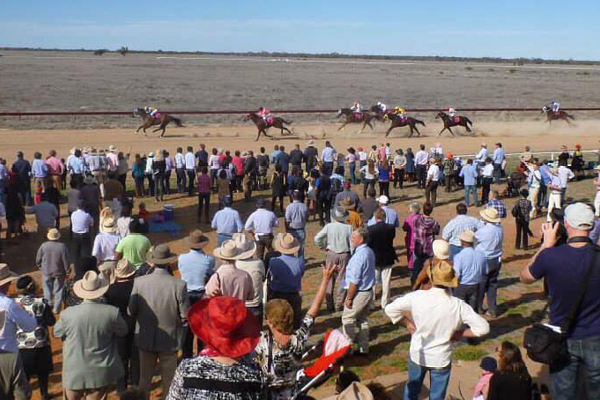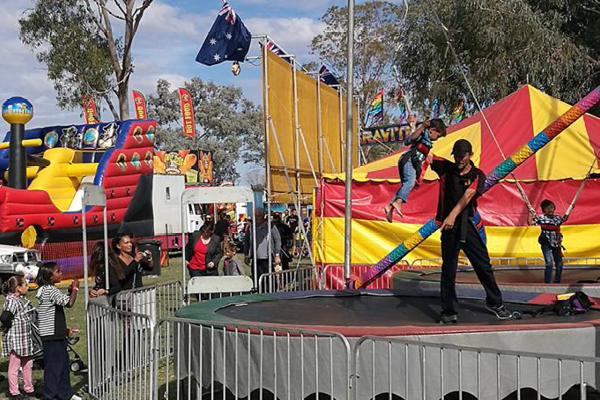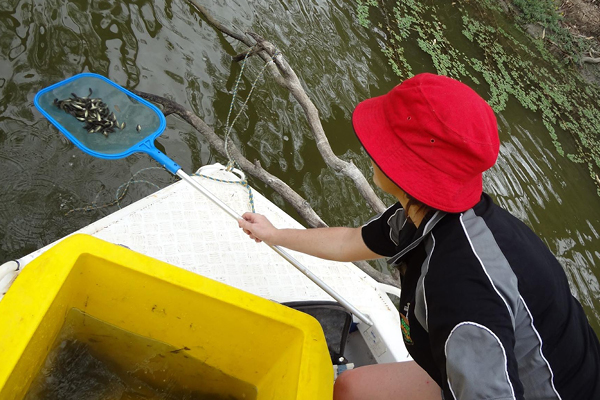Backtrack to the outback
The Kidman Way
Welcome to Bourke
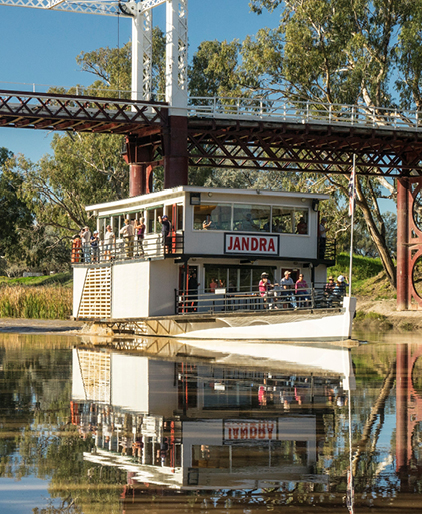
“BACK O’ BOURKE” is more than a geographical location, it’s part of the Australian language, part of its folklore. As Henry Lawson wrote in 1892, “If you know Bourke, you know Australia”. Photographers, naturalists, historians, lovers of poetry, birdwatchers, visitors or just plain old Aussies wanting to discover their roots, welcome to the Back O’ Bourke.
Bourke Shire, at the junction of the Mitchell and Kamilaroi Highways and the Kidman Way, covers an area of 43,000 km2 and is home to approximately 2600 people. The Shire’s main agricultural industries include cotton, cattle production, as well as a nsw small stock abattoir and of course the wool industry, part of Bourke’s history since the 1860’s.
BOURKE – LOUTH – BYROCK – FORDS
BRIDGE – WANAARING – ENNGONIA –
YANTABULLA – BARRINGUN

Attractions
Back O’ Bourke Exhibition Centre
The Back O’ Bourke Exhibition Centre brings to life the story of Outback New South Wales and the Back O’ Bourke. Take the interactive journey through the early exploration, the riverboat era, and the pastoral industry: discover the poets, the bushrangers, the conflicts and the legends… Wander through time from our Indigenous beginnings, our European settlement and our outback characters. From Charles Sturt & Major Mitchell to Charles Bean, Henry Lawson, Captain Starlight, Breaker Morant, Barefoot Harry, Aboriginal Tracker Frank Williams as well as many wonderful women of the best, such as Nancy Bird Walton.
P.V. Jandra
Experience the beautiful Darling River aboard the majestic Jandra Paddle Vessel. Enjoy one of the relaxing daily cruises, or book a private charter for your special event. Once on board, the Captain will inform and entertain you with a delightful commentary on river life, flora, fauna and the history of the riverboat era. The original Jandra was a steam paddle boat, built in Mannum, South Australia in 1894 for Arthur Senior of Bourke. Our modern paddle vessel was built by Russell Mansell and his family and commissioned in 2000; the first paddle boat to operate on the Darling River in over 60 years.
Back O’ Bourke Show
Cracker of a show! Have a laugh, be entertained, learn about outback station life. With fun-filled audience participation, experience the working relationship between man and animal – dogs, horses, sheep and more. Pull up a stump and hang on – you’re in for a ride!
Back O' Bourke Gallery
The Back O’ Bourke Gallery is situated on the banks of the Darling River at North Bourke, 5km north of the legendary Australian town of Bourke in outback NSW. This beautifully presented gallery houses the studio of one of Australia’s foremost established outback artists, Jenny Greentree. Jen’s art is inspired by the rich Australian outback scenery and together with her husband Steve they have developed a gallery that never ceases to impress the many visitors that pass through its doors. This working commercial gallery is a must see gallery on the ‘Outback art gallery loop’ from Lightning Ridge to Broken Hill and original works and reproductions have found homes around Australia and overseas.
Cultural Walks
This 45-minute leisurely walkabout digs into the real history of Aboriginal people in Bourke; you’ll learn about our land, water use and our spiritual connection to the waterways that surround our community. Before the ‘Cultural Walk’ journey begins, you will join in a ceremony in which you accept ochre – a natural clay earth pigment – that personally acknowledges Earth Mother before you hear about her landscape. You’ll discover how aboriginal people respected and used their environment and how a personal connection is formed with the land and it’s richness.
North Bourke Bridge
The historic North Bourke Bridge is the gateway to the outback. Linking the east to the west of Bourke and beyond. As the oldest surviving liftspan bridge in Australia, it was designed to allow paddle steamers and barges to pass through during high water in the early years of riverboat trade The bridge, built over a hundred years ago, is now closed to traffic, but still in use as a footbridge and popular photographic hotspot.
Historic Buildings
Bourke showcases many historically significant buildings well over 100 years old. Of particular interest is the Court House built in 1900 at the cost of 9,500 pounds. It is the farthest inland Maritime Court in Australia. Other noteworthy old buildings include the Post Office and the Post Office Hotel, the Western Lands Department, the Roman Catholic Church and Towers Drug Company.
Crossley Engine
This twin cylinder oil-fuelled stationary engine was manufactured by the Crossley Brothers of Manchester, England in 1923. It has an impressive history before being fully restored by the Bourke Shire Council. It is now located in the Wharf Precinct at the northern end of Sturt Street.
Lock and Weir
The lock at the Bourke Weir was the first to be built on a river anywhere along the Murray / Darling River systems. Built in 1897, the lock measures 59.5 metres between gates and is 11 metres wide.
Fort Bourke Stockade
Built as a depot and defensive fort by Major Thomas Mitchell during his exploration to the region in 1835.The Fort was named after His Excellency Richard Bourke, the Governor of the Colony at the time. A replica of the original fort was built in 1983.
Bourke Historic Cemetery
The Bourke Cemetery contains a great variety of graves of historical significance. The most famous grave is that of Fred Hollows, the highly respected eye surgeon. Fred Hollows developed a strong affinity with the Aboriginal community in Bourke and Enngonia, to the extent of his wish for Bourke Cemetery to be his final place of rest. Also buried in the cemetery is Senior Constable McCabe (shot by bushranger “Captain Starlight”), bush poet Francis Brown, and many other local characters.
Mt. Oxley
An hour spent with eagles in the silence atop Mt Oxley looking across a 100km expanse, rekindles the experience of explorers Sturt and Hume in 1829. Mt Oxley, rising from the perfectly flat landscape, has without question the best views of the area. A must see panorama stretches as far as the eye can see. The sunsets at Mt Oxley are stunning with vibrant pinks and purples painting the sky.

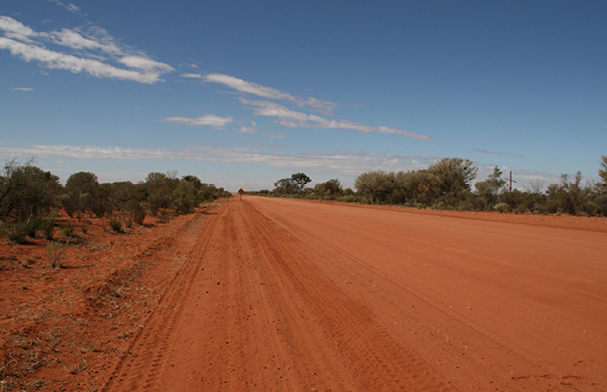
Our Villages and Surrounds
Wanaaring
On the banks on the Paroo River, is the village of Wanaaring. Established in the 1880s, the town provided services to the large sheep properties of the time. Once, wool scouring, or wool washing, was carried out on the banks of the river. Long gone, reminders of those times can be found among the memorabilia on the river banks. In 1891 the town boasted two hostels, two stores, a saddler’s shop, butcher, two blacksmiths, a boarding house, school and a number of cottages. Today Wanaaring is a great first stop to visiting the corner country.
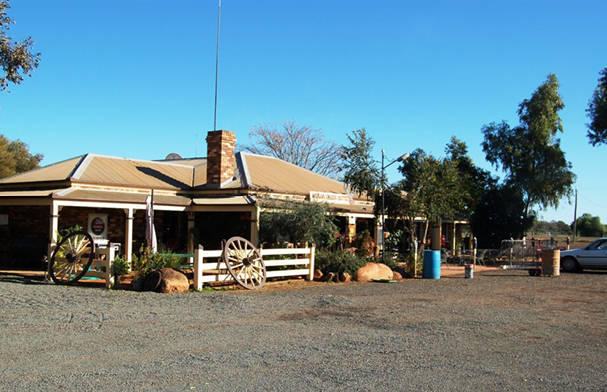
Byrock
The village of Byrock was once a stopping point for Cobb & Co coaches which used the Byrock rock holes to water their horses. By 1879 the Mulga Creek Hotel was being used as a Cobb & Co change station. In 1884 the Great Western Railway from Sydney reached Byrock and by 1886 there were about 500 people living in the area. There were 10 stores, 5 hotels, a school, post office, as well as a butcher’s shop and a baker’s shop. Named after the rock hole, called Bai by the Ngemba tribe. This became the Bye Rockhole, then Bye Rock, then Byrock. Today the Mulga Creek Hotel is a popular watering hole which also offers camping facilities and bushwalks through the scrub. Yantabulla Originally called Yanda Bullen Bullen, Aboriginal for “plenty to eat”, Yantabulla was once a prosperous town of many houses, a hotel, store, school, police station and cordial factory. Vincent Dowling once owned a homestead in Yantabulla and Cobb & Co had a changing station there. Little remains today other than the spirits of those early days.
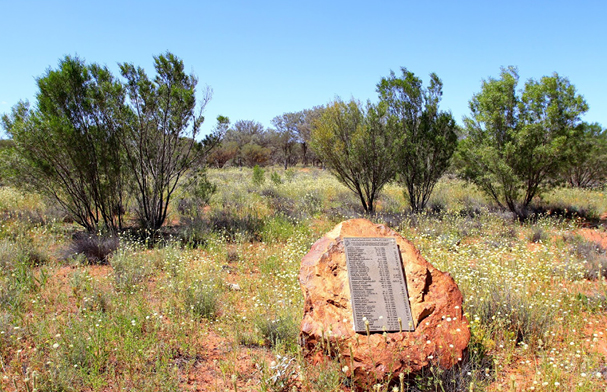
Yantabulla
Originally called Yanda Bullen Bullen, Aboriginal for “plenty to eat”, Yantabulla was once a prosperous town of many houses, a hotel, store, school, police station and cordial factory. Vincent Dowling once owned a homestead in Yantabulla and Cobb & Co had a changing station there. Little remains today other than the spirits of those early days.
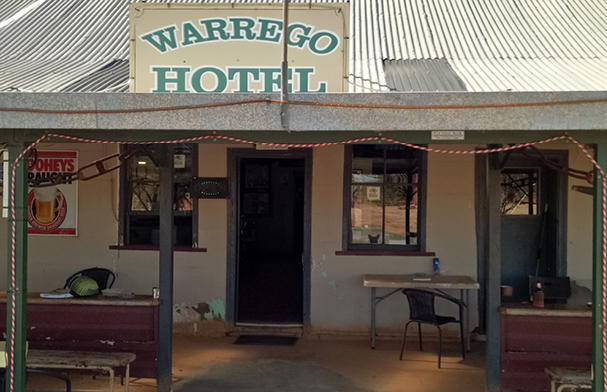
Fords Bridge
The village of Fords Bridge, located on the Warrego River was once a small flourishing town with a butcher shop, post office, school and race track. Today “Fordsie” is a sleepy town of four!
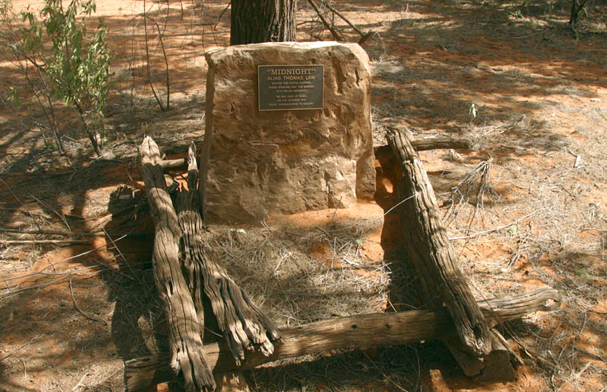
Enngonia
The village of Enngonia is little more than a few buildings and a popular watering hole, the Oasis Hotel/Motel, on the Mitchell Highway. Its main claim upon the traveller is that it is particularly rich in bushranger history. In 1868 two incidents occurred which drew attention to the town. The bushranger and horse thief known as Midnight was shot and killed to the west of the town and the bushranger Frank Pearson, known as Captain Starlight, shot and killed Constable John McCabe in the Shearer’s Inn.
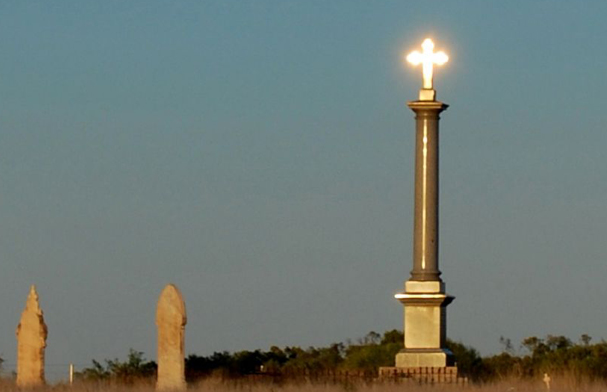
Louth
The village of Louth was established in 1859 when an Irishman named T.A. Mathews built a pub to cater for the passing river trade and the Cobb & Co coaches, both which were servicing the booming pastoral industry of that era. At one stage the town grew to have three hotels, a cordial factory, three bakeries, two butchers, a post office, three churches, a Chinese garden, a general store and a police station. Today, Louth is a small and friendly town consisting of a pub, fuel stop and a tiny school.
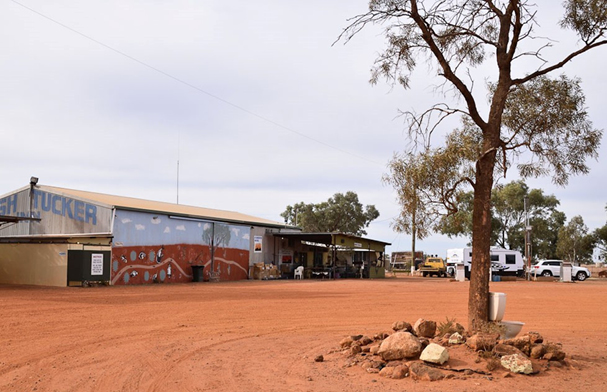
Barringun
Before Federation, when the borders between states were controlled by customs officers, places like Barringun, which is located on the New South Wales-Queensland border, were important stopping points with bonded warehouses, hotels and shops servicing travellers crossing from one state to the other. Once Federation occurred and the state borders were removed the towns started to die. The town that was once a stopover point for shearers, drovers, mailmen, swaggies, labourers, adventurers and Cobb & Co coaches became a sleepy village.

